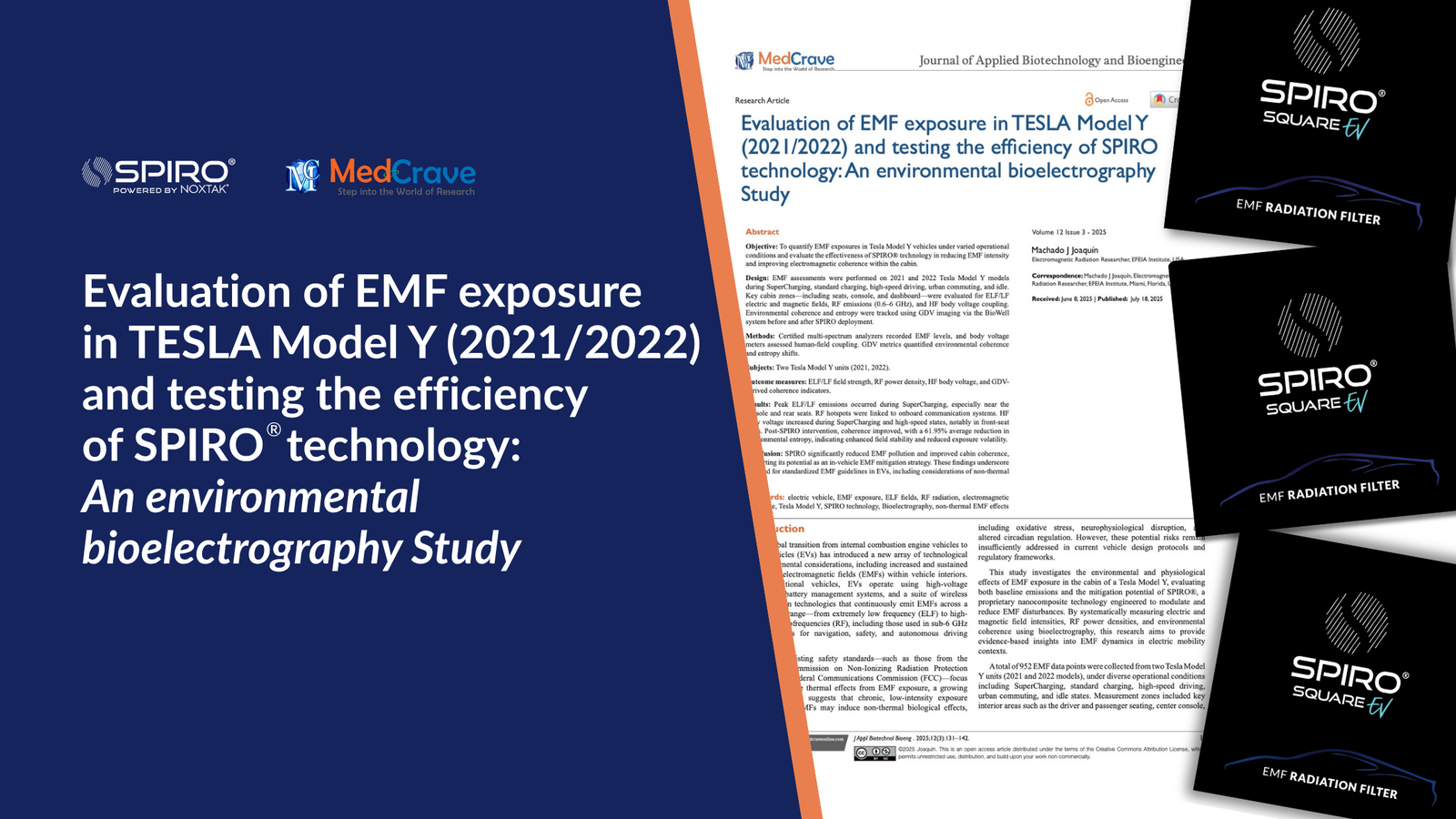Electric Vehicles and Electromagnetic Pollution: What the Tesla Model Y Study with SPIRO® Reveals

Did you know that charging an electric vehicle can generate levels of electromagnetic pollution up to ten times more intense than when it’s idle? This reality, documented in a recent study on the Tesla Model Y, uncovers a little-discussed dimension of the shift toward electric mobility.
With the growing adoption of electric vehicles (EVs), concerns about EMF exposure inside them are also on the rise. Unlike conventional cars, EVs integrate high-voltage batteries, electric motors, inverters, and continuous-communication systems such as Wi-Fi, LTE, and Bluetooth, all of which emit electromagnetic pollution across a broad spectrum. Although current standards from bodies like the International Commission on Non-Ionizing Radiation Protection (ICNIRP) and the Federal Communications Commission (FCC) focus on thermal effects, accumulating evidence suggests that chronic exposures—even below those limits—can induce non-thermal biological effects such as oxidative stress, neurophysiological disruptions, and circadian disturbances.
A study published in 2025 in the Journal of Applied Biotechnology & Bioengineering, titled “Evaluation of EMF Exposure in TESLA Model Y (2021/2022) and Testing the Efficiency of SPIRO Technology: An Environmental Bioelectrography Study,” assessed EMF emissions inside two Tesla Model Y units (2021 and 2022 models) under different conditions: standard charging, SuperCharging, urban driving, and highway driving. Using multi-spectrum analyzers and environmental bioelectrography (BioWell), researchers measured ELF/LF electric and magnetic fields, RF radiation (0.6–6 GHz), coupled body voltage, and environmental coherence.
Correspondence:
Machado, J. Joaquín
Electromagnetic Radiation Researcher, EFEIA Institute, Miami, Florida, USA
The findings were striking: during rapid charging (SuperCharging), ELF/LF emissions peaked—especially near the rear seat and center console. The areas of highest body coupling were the driver’s and front passenger’s seats, and “environmental entropy” levels rose significantly, indicating an unstable electromagnetic environment.
After establishing these baseline conditions, SPIRO Power 19 technology was installed inside the cabin. SPIRO® is a passive-filtering technology based on nanocomposites, designed to reduce electromagnetic pollution by reorganizing the polarization of artificial waves (AQN), thereby promoting a more coherent and biocompatible field without disrupting connectivity. Following its implementation, an average 61.95% reduction in electromagnetic entropy was observed, along with improved environmental coherence and decreased body-voltage coupling.
These findings spark an urgent discussion about the need to establish EMF safety standards that address not only thermal effects but also non-thermal ones. In the meantime, EV users can:
-
Avoid staying inside the vehicle during rapid charging.
-
Use passive-filtering technologies such as SPIRO® to enhance environmental coherence.
-
Adopt “electromagnetic hygiene” habits, like turning off Bluetooth and Wi-Fi when not in use.
Electromobility is the future—but are we considering all its invisible impacts? Studies like this demonstrate that technological progress and environmental health need not be mutually exclusive. We invite you to learn more about passive filtering and explore solutions that optimize your electromagnetic environment.
You can access the full study at the following link or download the PDF: Download Full Study (PDF).
Joaquín J. Machado will present the key findings of this study in a special broadcast on our YouTube channel @noxtak on Monday, August 11, 2025 at 2:00p.m (EST TIME).
Join us!



